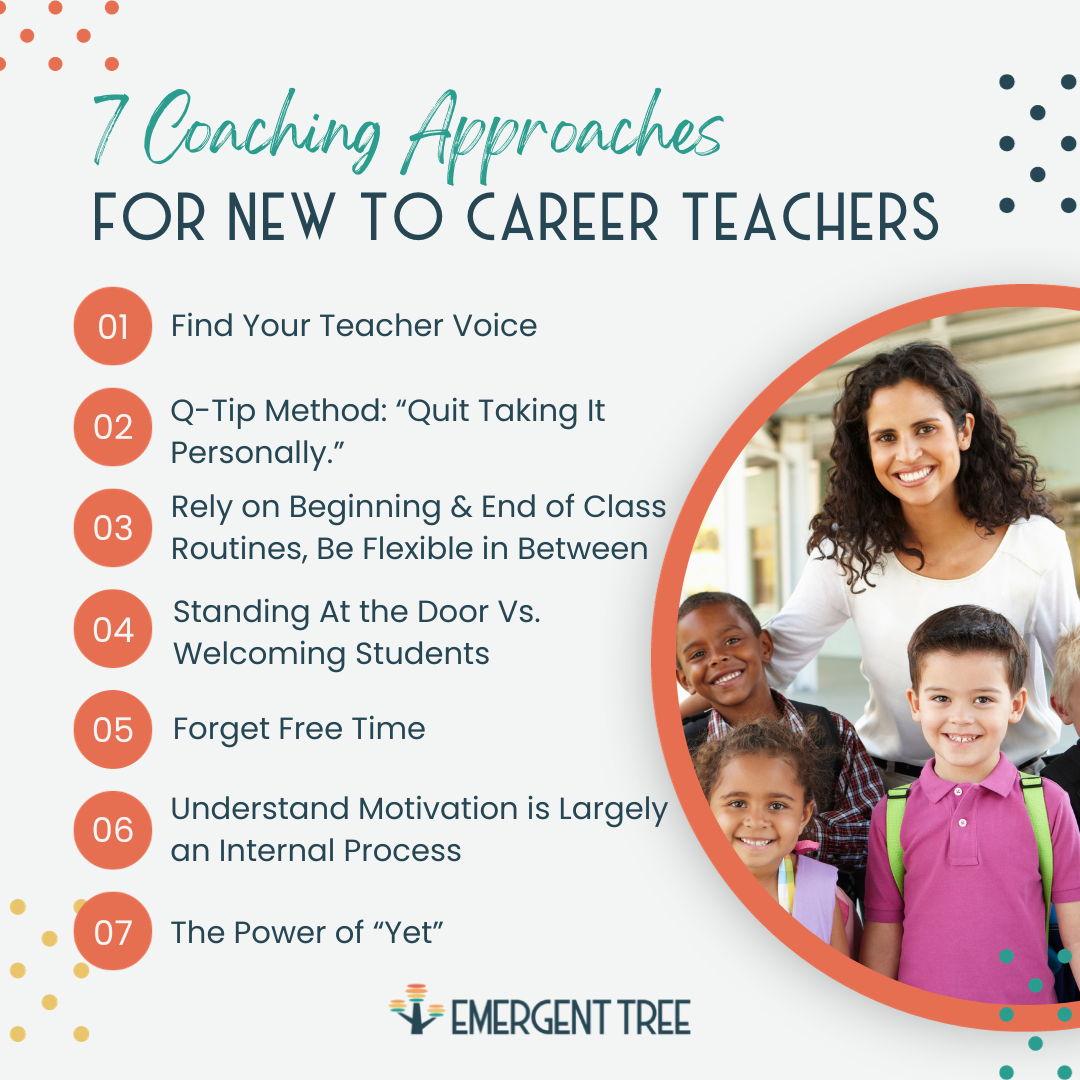Understanding the Power of Motivation
We all have stories that have brought us to where we are today, things in our past that have driven us to a path of our unique impact. A young teacher I worked with a few years ago had a special story that moved her toward her career of choice. She grew up in a family filled with brothers and sisters. Their family came to America from Mexico and faced several challenges along the way. She grew up in the face of diversity and adversity and knew the way to guarantee her strong future would be a strong education. She sought out scholarships and tackled her education with a fierce focus and motivation. After graduation, she knew her way of giving back would be to become a teacher herself. The teachers who had supported her through the difficult journey inspired her to inspire students with challenging backgrounds to a similarly strong future.
As a first-year teacher, she and I had a lot of conversations about motivation. She grew up with fierce motivation and passion while attending school. Quickly, she saw that each student had a different story and motivation - most of which contrasted hers. She wanted to impact and connect with students and had a compelling personal story. Still, she realized her approach would need to differ from the one that drove her success to one that drives their success. Here are some things we worked on together to help her through that first year of teaching and resetting expectations.

The 7 Coaching Approaches for New to Career Teachers
1. Find Your Teacher Voice
As you look at your classroom dynamics, presence is essential. Your classroom is your space, so feel confident in it. Own it. You are the anchor in the classroom. Here are some ways to find your voice:
- Self-Regulation: Let's face it: we have moments of stress and frustration (it's just normal), but we can help regulate how to handle the stress. Your anxiety or lack of confidence will come across to your students in the classroom, so you need to learn some techniques called neutralizing routines to help you reset when you feel these things happening (breathing techniques, messaging for students to pause, etc.).
- Calm is Key: Things don't have to be perfect (it's hard to be okay with, I know!). Sometimes, a stressful situation must be calmed down before the challenges are addressed or ideas for improvement are tackled. It's important to remain that anchor of calm in the situation with your students.
- Balance: Balancing being direct, simple, and caring is critical for a teacher. We often lean towards extremes of too much care and not enough directness or vice versa, but building a confident rapport with your students through balancing these things is crucial.
2. Q-Tip Method: "Quit Taking It Personally."
Students, teachers, and administrators (actually all humans) interact with you based on their past experiences and relationships. When they suggest ideas or react to you, it's based on their current state of mind and their past, not yours. There might be things you can do better, or they can do better, but it's not about who you are as a person. When you feel hurt, remember to Quit taking it personally (Q-tip). Focus on what you CAN control and reflect on what adjustments you can make for the future.
Remember, it's not personal when:
- You've worked hard on a lesson, and it doesn't "land" with students.
- When a more experienced teacher says, "Well, we've never done it that way before."
- Students have challenging behaviors.
- Students don't readily see value in the subject you're teaching.
- An administrator offers you support.
- Students don't respond to incentives.
- When students forget even after you "told them five times!"
Educators are often overachievers. It can feel like a reflection on you to see these things happen, but it's about seeing each moment as an opportunity for learning and growing, both for the student and ourselves as teachers.
3. Rely on Beginning and End of Class Routines and Be Flexible in Between
Consistency with your students is vital. As you gain experience, you have to adjust and change. Don't lock yourself into elaborate class-long routines. The details of lesson progression, transitions, individual work, and student talk must adapt and change as you get to know students' needs. Beginning and end-of-class routines, however, provide the anchors needed for consistency while also leaving flexibility for the time in between. Stay committed to beginning and ending instruction the same way each day, and allow yourself to deviate from your original "in-between" plans as needed. It's a balancing act, but this structure ensures you can master it.
4. Standing At the Door Vs. Welcoming Students
Standing at the door is not…
- Passing out papers
- Correcting student behavior, dress code, etc., as they walk in the door
- Talking to another teacher or friend instead of your students
Welcome your students instead…
- Create time for intentional, human interaction, not just student/teacher interaction.
- Model eye contact, warmth, and the importance of greeting one another meaningfully and authentically.
- Take a quick temperature check to gain insight into each student's emotional state as they enter your classroom daily.
Leverage Reach & Respond methods as a daily routine to welcome and assess each student as they launch into the school day.
5. Forget Free Time
Everyone (students and teachers) needs structure. Without structure, misbehavior happens. Leveraging "extra" time in the day with focused activities provides consistency. It allows you and your students to focus on growth and learning, even if it's learning about each other.
Create a Toolbox for structured free time in lieu of unstructured free time to include:
- Relationship building activities
- Sharing circles
- Inspirational YouTube videos
6. Understand Motivation is Largely an Internal Process
Motivation comes from within a person. Teachers don't motivate. They do inspire, cultivate curiosity, and build meaningful relationships that help students explore content in a mentally and emotionally safe environment. Stop trying to find the right motivation for each student and honor that it is up to his/her internal processes. However, never stop inspiring, developing quality lessons, listening, adapting, trying new things, getting to know your students as people, and making family connections. Flip your focus from motivation, which you do not entirely control, to the things that you do.
7. The Power of "Yet"
The blame game can come in many forms; we must learn to recognize it when it happens and consciously counter its lure by maintaining a growth mindset around students' skills and our skills when:
- Behavior Becomes Persistent
When behavior happens repeatedly, it can be easy to move into blaming the student, inferring purposeful intent, or wondering if they will ever improve. But if we see behavior as a skill (just like learning to read), we realize progress takes time. Through repetition, practice, and feedback, student behavior will improve. So challenging behavior indicates the student may not have mastery of the skill YET, but continued practice will lead to continued skill gains. - Current Strategies for Behavior Aren't Working
Behavior supports, and interventions can be complex. The effectiveness of a strategy can hinge on a specific application of each step. If a strategy isn't working, ask for feedback from a mentor, teacher, or instructional coach. Just like an athlete needs a coach to help, them make subtle shifts in their technique, feedback from an outside observer can help us refine our behavioral strategies to become more and more effective.
"Yet" indicates you are still trying and seeking to understand the situation or student's needs. "Yet" takes responsibility for continuing to try and find a solution and honors a growth mindset in ourselves and others.
Listing out the seven approaches here is evidence of the depth of work you put into helping your students. There is a lot to balance as a teacher, so remember to bring grace for yourself to the table and take each day one step at a time.
Here are some resources to help you on your own pathway:

Live Webinar: Collaborative Coaching for Classroom Management: Register for our Upcoming Webinar on 11/30
Courses:
- Cultivating the Classroom
- Introduction to Tier 1 Systems: Laying the Ground Work for Behavior Support
On-Demand Webinars:



Comments